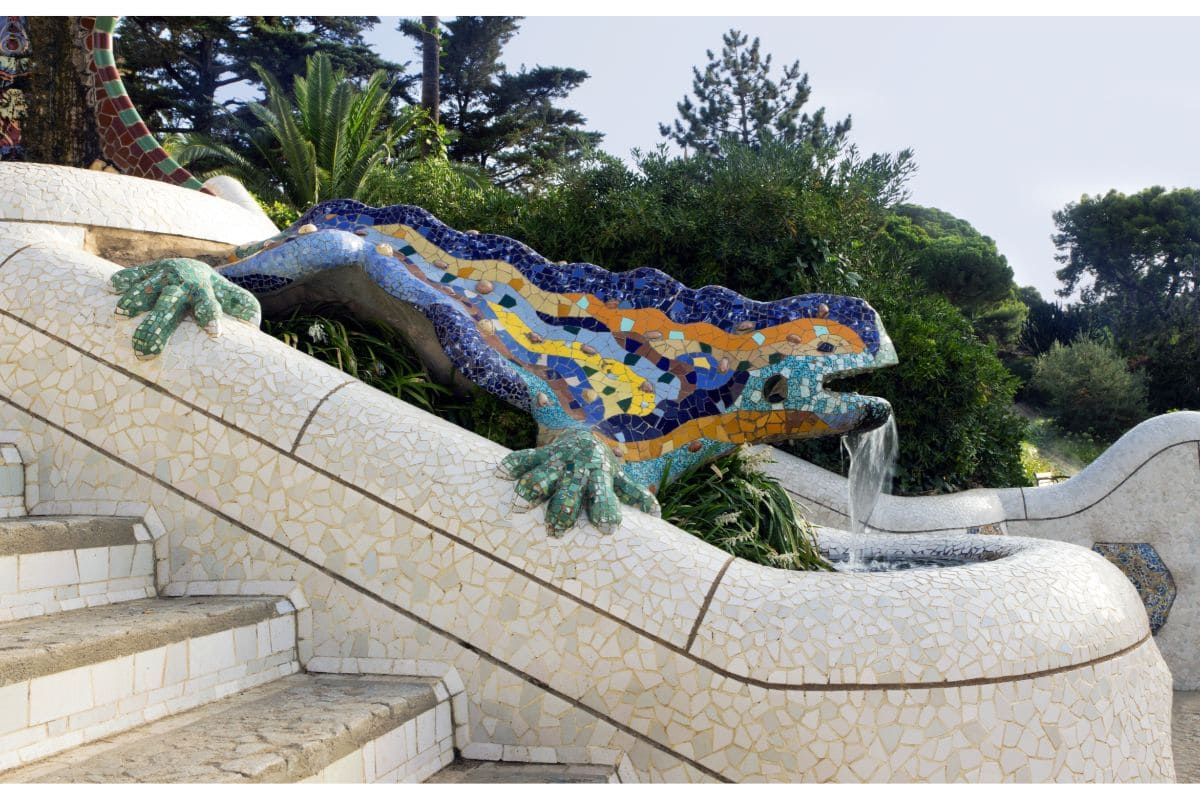Antoni Gaudí is the greatest exponent of Catalan modernism, as well as one of the most important architects in history. In fact, the most emblematic buildings in Barcelona, located mainly in the Eixample, in Ciutat Vella and in the upper area of the city, are his work.
Here is our route through his most iconic buildings so that you can enjoy them to the fullest. Off we go!
Discover Bellesguard House, the start of our route
We start the route at Torre Bellesguard, also known as Casa Figueres. Located at the foot of Tibidabo, in the Sarrià-Sant Gervasi district, it was built by Antoni Gaudí between 1900 and 1909, and for two years it was the permanent residence of King Martín I ‘The Human’, and the temporary residence of Benedict XIII, better known as Papa Luna. Both the structure of the building and its design are a mix of Gothic and Modernism and it is precisely this that gives it a unique idiosyncratic appeal. Likewise, the tower and the spectacular views it offers, as well as the gardens are magical and full of color. Although it was declared an Asset of Cultural Interest on July 24, 1969, probably it is Gaudí’s least-known work, as it only opened its doors to the public for the first time, just 9 years ago.

Visit the Torre Bellesguard on C/ de Bellesguard, 20
Enter Park Güell
A truly unmissable, exceptional place on this route is Park Güell, a shared dream of the businessman Eusebi Güell and his architect, Antoni Gaudí. Started in 1900, the initial intention was to build a residential neighborhood in Barcelona for wealthy families on a large estate that he had acquired in the area popularly known as the “Pelada Mountain”. Although its situation was unbeatable, a healthy environment with splendid sea views and the plain of Barcelona, there was little commercial interest and, in 1914 the works were abandoned and the space was converted into a large private garden, which Güell sometimes opened for public events. The park began to appear in tourist guides as one of the city’s attractions, becoming a public park highly appreciated by the people of Barcelona and an important attraction for visitors. In 1969 it was recognized as an artistic monument and in 1984 it was declared a World Heritage Site by UNESCO. It is an unmissable place that you can return to again and again due to its immeasurable beauty.
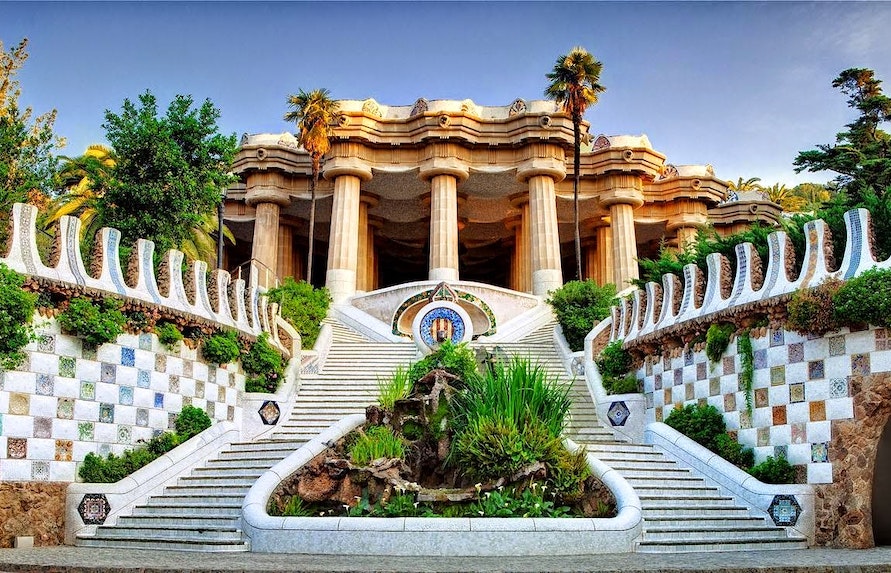
See more information on the Park Güell website.
Let yourself be surprised by La Pedrera and Casa Batlló
Of course, we cannot forget two fabulous places located on Paseo de Gràcia. One is Casa Milá (La Pedrera) and the other Casa Batlló. La Pedrera was commissioned by Pere Milà and Roser Segimon the new residence of the Milà family, who occupied the main floor and rented the rest of the flats. It is Antoni Gaudí’s most emblematic lay building, both for its innovations in construction and function as well as for its ornamental and decorative features.
La Pedrera is an authentic work of art, something that you will feel as soon as you set eyes on its undulating forms and its many other details. As with all Antoni Gaudí’s buildings, this building was included in the Catalog of Artistic Heritage of the city of Barcelona in 1962 and declared a Historic-Artistic Monument of National Interest by the Spanish Government in 1969. UNESCO registered it in 1984 as a World Heritage Cultural Asset, for its exceptional universal value. Its rooftop is overwhelming and many different events take place there, including classical music concerts as well as many other artistic and cultural activities.
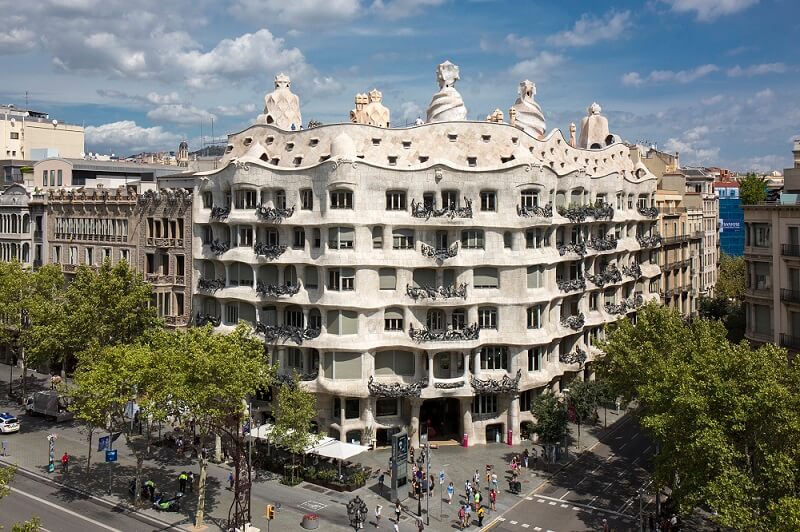
Visit La Pedrera in Passeig de Gràcia, 92
Speaking of Casa Batlló, the truth is that it is best not to compare any of the works of the great Gaudí. Each has its own unique personality and history. Casa Batlló ceased to belong to the Batlló family in the 1950s and since the 1990s the building has been in the hands of the current owners, the Bernat family, who have fully restored the house. It is an architectural jewel where, in addition to cultural visits, exclusive events are also held. Like the rest of Gaudí’s works, Casa Batlló is a UNESCO World Heritage Site, an icon of Barcelona, and an essential stop for those wishing to discover the work of Gaudí and modernism at its best. It is one of the most valued cultural and tourist attractions, welcoming 1 million visitors a year.
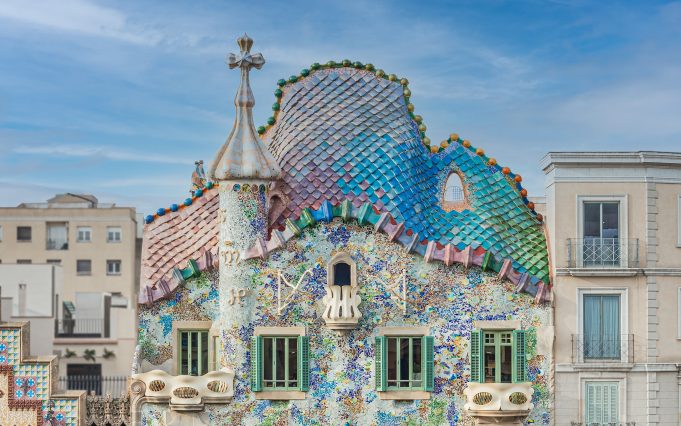
Visit Casa Batlló in Passeig de Gràcia, 43
Güell Palace: a magnificent example of modernist domestic architecture
Palau Güell is another of Gaudí’s flagships. It was the first time (1885) Eusebi Güell commissioned Antoni Gaudí. It is an urban palace with all kinds of luxury, but at the same time located in the Raval, one of Barcelona’s most densely populated neighborhoods and also one of the most run-down at the time. It is a surprising building in terms of the contrast it represents with Gaudí’s previous works. Its exterior is apparently sober, despite the fact that its symmetry, its volume, and the appearance of the padded façade are reminiscent of Renaissance-era Florentine palaces. However, its interior is much more ostentatious and stands out as its rooms are distributed around a central hall, which works as an interior patio and acts as a source of light. Because it is one of Gaudí’s first works it contains the essence of all his later work too and therefore it is key to understanding his architecture as a whole. A must
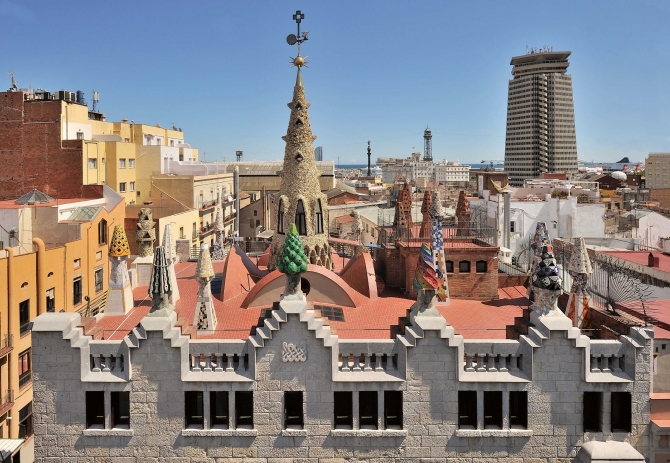
Visit the Palau Güell in C/ Nou de la Rambla, 3-5
Casa Vicens: Gaudí’s first great masterpiece
After five years of restoration and rehabilitation, Casa Vicens opened its doors five years ago. Gaudí’s first great masterpiece, was built on Calle de las Carolinas between 1883 and 1888. Gaudí was commissioned by Manuel Vicens to build a summer house for him and his wife on the land he had inherited in the old Vila de Gracia. Its beauty is indescribable and shows the numerous structural, decorative and symbolic elements that Gaudi used for the first time and later marked the idiosyncrasies of his architectural language. A visit is essential.
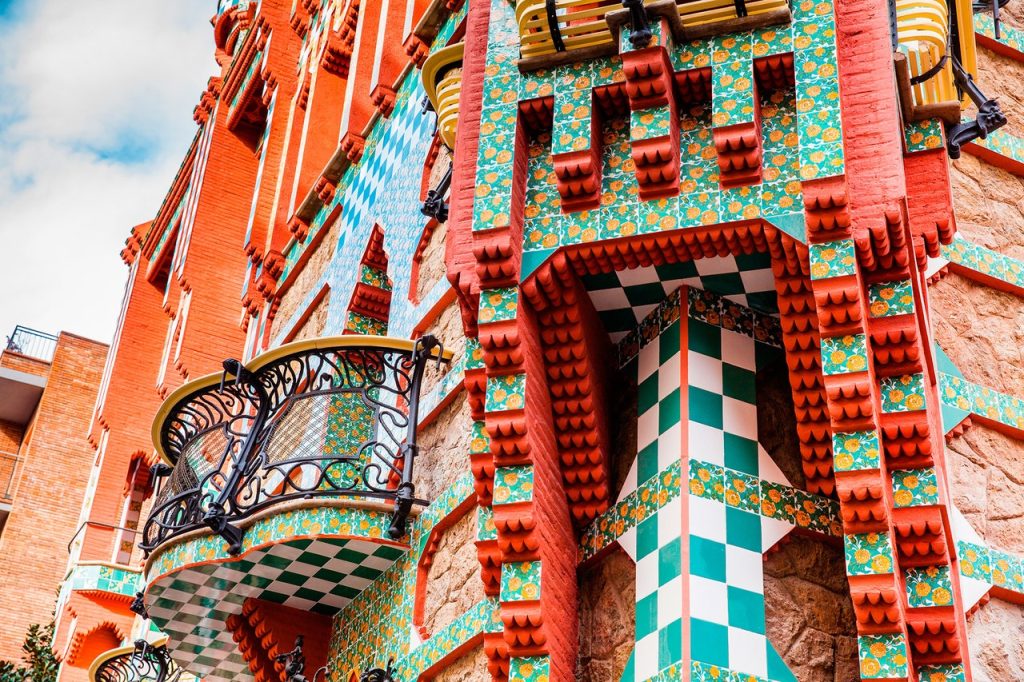
Visit Casa Vicens in C/ de les Carolines, 20-26
The Sagrada Familia: the greatest example of Catalan modernist architecture
The jewel in Gaudi’s crown is the Basilica of the Sagrada Familia, both for its origin and founding as well as everything related to its purpose. The Sagrada Familia, designed by Antoni Gaudí, was a project promoted by and for the people. Five generations have now seen the evolution of this temple. More than 140 years have now passed since the laying of the first stone yet the basilica is still under construction. We don’t know if we will ever see it finished, the Sagrada Família, as an expiatory temple, has been built from its inception exclusively thanks to donations and contributions from thousands of people over and seeing it grow is in itself quite a spectacle. Of course, we strongly recommend that you visit it. It has no equal.
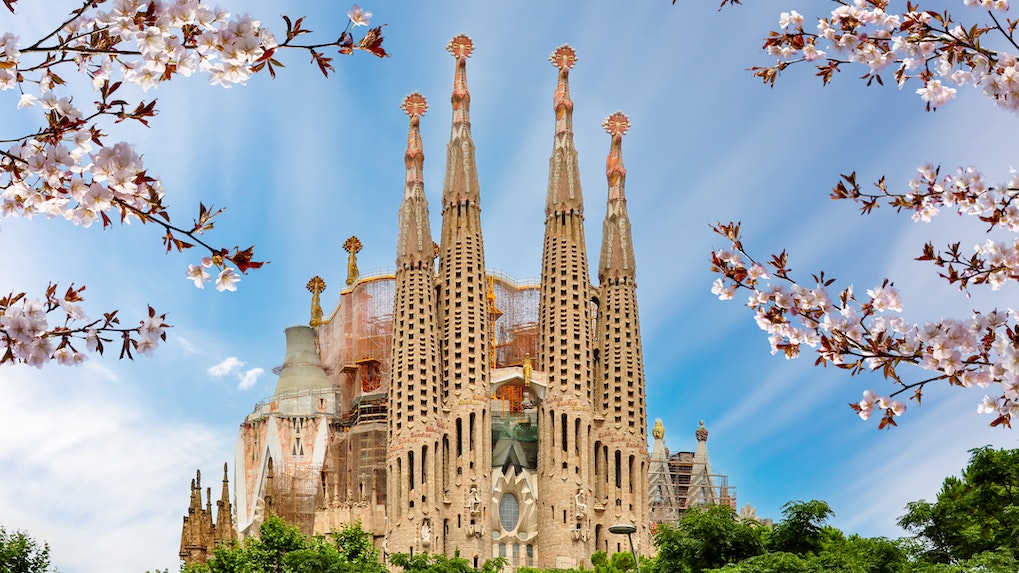
Visit La Sagrada Familia in C/ Mallorca, 401
As you will be able to see, when you discover for yourself the fantastic works of art by this enigmatic architect, you will see in each of them how they stand out by incorporating constructive solutions inspired by nature, as well as their deep religious symbolism.
We hope you enjoy this route as much as we do!
 Book Tickets
Book Tickets
